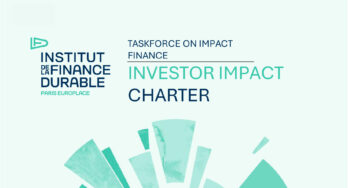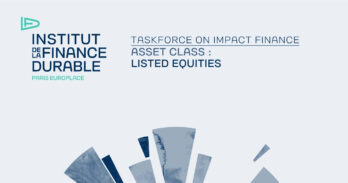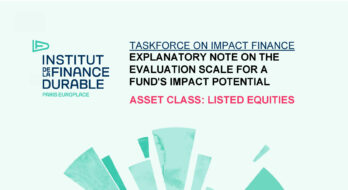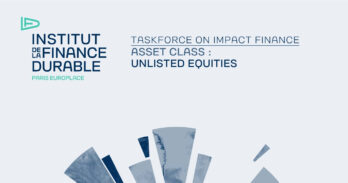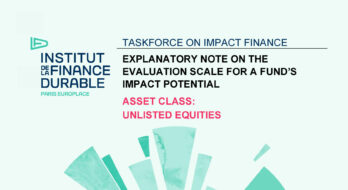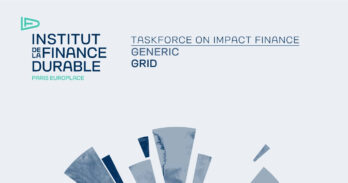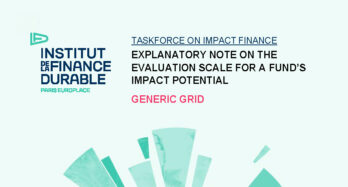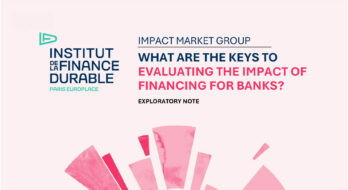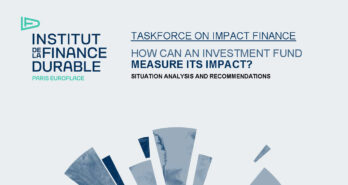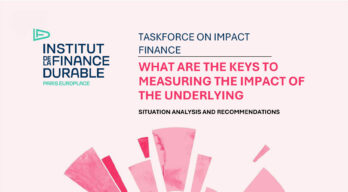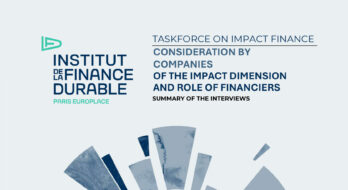IFD publishes the first industry standards to support the development of impact finance
In March 2021, the Institut de la Finance Durable launched a Place group to develop impact finance, at the request of Minister Olivia Grégoire, then Secretary of State to the Minister of the Economy, Finance and Recovery, in charge of the Social, Solidarity and Responsible Economy. As a result of this initial work, the IFD is today publishing a series of deliverables and tools, developed collectively and made available to all financial players, which establish an operational framework aimed at fostering the development of impact finance.
Against a backdrop of growing interest in the subject of impact finance at both national and international level, players from the Paris financial center, pioneers in the field, are developing operational tools to ensure an initial framework for the robust and transparent deployment of impact finance. More than 300 people representing some 150 entities have been involved in this work led by the IFD. Following the 2021 and 2022 publications, members focused on the development of two main documents for assessing impact funds:
- The impact investor charter, setting out the principles to be respected in order to define oneself as an ‘impact fund’, in line with the Place definition, and committing signatory funds to applying the grid;
- The grid for assessing a fund’s impact potential, updated and adapted to different asset classes, with associated explanatory notes for listed and unlisted equities.
‘The Paris financial center’s pioneering expertise in impact finance has enabled us to offer an operational tool designed to help scale up these practices. This testifies to the strong mobilization of players and their desire to accelerate together to contribute to the growth of impact finance within a framework approved by all to ensure robust and transparent pillars,’ declared Cécile Goubet, Managing Director of the Institut de la Finance Durable.
A two-stage approach, based on operational tools and progressive over time, to qualify as an ‘impact fund’
The introduction of the Investor Impact Charter, combined with a grid for assessing a fund’s impact potential, will lead to greater harmonization of practices and progressive ambition over time.In concrete terms, a management company wishing to qualify a fund as an ‘impact fund’ will have to sign the Charter and evaluate the fund(s) concerned using the grid every 3 years.
For the first iteration of the grid, the minimum score required will be set at 55 points. In order to keep pace with the evolution of the funds, it will be increased over time according to the following trajectory:
- 60 points from January 1, 2025
- 65 points from January 1, 2026
- 70 points from January 1, 2027
In addition to this minimum score, funds must answer 12 qualifying questions.
Being able to rely on the charter will enable financial players to enhance the value of their actions by guaranteeing that the impact strategies specific to each player are based on a common, transparent methodological foundation. In order to pursue this ambitious structuring approach, the IFD will work on adapting this grid to other asset classes and ensuring that these tools are properly aligned with the spirit of regulations such as the SFDR.
In addition to these key tools, four documents lay the foundations for further work
These notes identify the remaining obstacles to be overcome and the best practices to be put in place to encourage its development:
- An initial report entitled ‘ What are the keys to assessing the impact of financing for banks ?
- A summary of the hearings with impact companies, entitled ‘ How companies take the impact dimension into account and the role of funders ‘, which identifies the best practices to be implemented by companies and funders to strengthen their impact dynamics;
- Two studies, ‘ How can an investment fund measure its impact? ‘ and ‘ Measuring the impact of its underlying assets ? This state of the art will enable them to identify existing best practices to improve their impact measurement.

